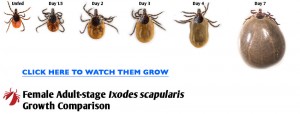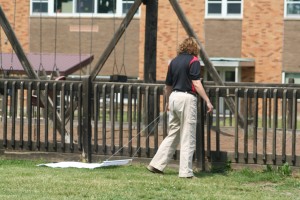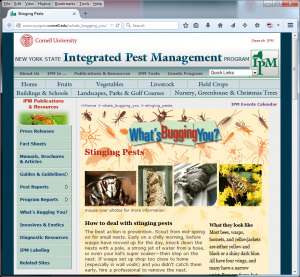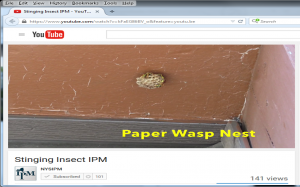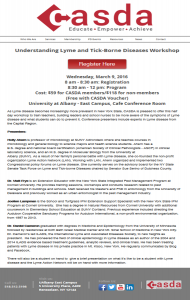There is no end to education. It is not that you read a book, pass an examination, and finish with education. The whole of life, from the moment you are born to the moment you die, is a process of learning. – Jiddu Krishnamurti
One of the key tenants of IPM is knowing your pests, or potential pests, and risks. Learning opportunities become a valuable tool in helping to prepare for and prevent pest issues from arising. Happily, we live in a time when School IPM training events are easily accessible.
The annual Turf & Grounds Exposition has an informative Sports Turf and Schools track. This year will highlight some back to basics presentations, a focus on regulations pertaining to schools, ongoing research on alternatives to pesticides for sports turf management, and irrigation and water management. The Exposition will be Nov. 16 and 17 in downtown Rochester. This and other events are listed on our Facebook page at https://www.facebook.com/NYSIPM/events.
Throughout the year, the EPA Center of Expertise for School IPM hosts a webinar series featuring national experts from across the country. Upcoming webinars include:
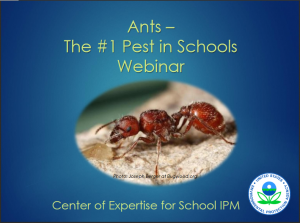
Ants – The #1 Pest in Schools is one of many webinars offered by the EPA Center of Expertise for School IPM.
- October 18, 2016 — Pest Control Should Not Drive You Batty: How to Manage Bats Effectively in Your School
- November 15, 2016 — Developing an IPM Plan for Your School
- December 13, 2016 — Managing Cockroaches in Schools
- January 24, 2017 — Pests of Public Health Importance in Schools
- February 21, 2017 — Contracting for IPM-Based Pest Control Services for Schools
- March 14, 2017 — Preventing Pests in School Cafeterias and Kitchens
- April 11, 2017 — Contending with Invasive Plants on School Grounds
- May 9, 2017 — Managing Bed Bugs in Schools, Childcare Centers, and Boarding Schools
- May 23, 2017 — Managing Yellow Jackets and Other Wasps on School Grounds
Previous events cover a variety of topics including mosquitoes and Zika, ants, rodents, Stop School Pests and iPestManager – School IPM Educational Programs, turfgrass IPM, designing for pest prevention, and more. Webinar PDFs are available for all presentations and the recorded webinar is available for many.
And for information at any time, do not hesitate to visit NYS IPM’s Schools and Daycare Centers and the Safe Sports Field Management websites.

